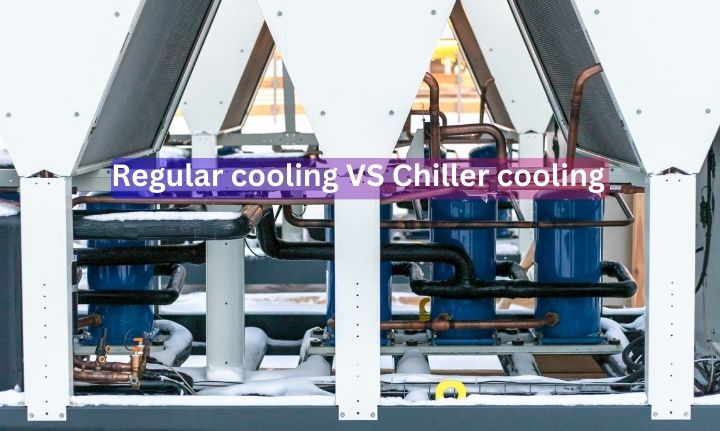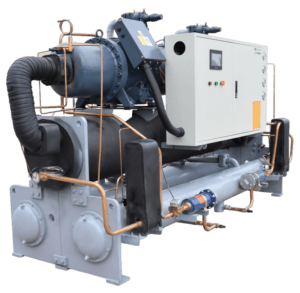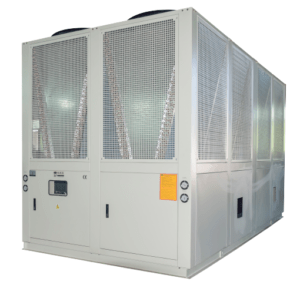
Guide to Understanding Air Conditioning Systems
The Ultimate Guide to Understanding Air Conditioning Systems: From Regular Units to Chiller-Driven Central Cooling
Air conditioning (AC) systems are indispensable in providing comfort and maintaining the right temperature, regardless of the weather outside. From compact window units in our homes to sophisticated chiller-driven central cooling systems in large complexes, the technology behind these systems is fascinating and complex. This guide aims to demystify the world of air conditioning, exploring the nuances of regular AC systems and the intricacies of chiller-driven central cooling systems.
Navigating the World of Regular AC Systems
Regular AC systems, or Direct Expansion (DX) Systems, are the backbone of residential and small commercial building cooling solutions. They employ a straightforward refrigeration cycle, directly cooling the indoor air with refrigerant. Let’s explore the different types of regular AC systems:
Window Units: The Compact Cooling Solution
What Are They? Window units are self-contained air conditioning systems that fit snugly into window frames. They are the go-to solution for cooling single rooms or small spaces efficiently.
Visual Guide: These units are typically box-shaped, with a front panel with controls and an air outlet. The rest of the unit extends outside to expel heat, designed to be discreet and blend seamlessly with window frames.
Split Systems: The Versatile Cooling Companion
What Are They?
Named for their split configuration, these systems consist of an outdoor unit (housing the compressor and condenser) and one or more indoor units (containing evaporators), connected by refrigerant lines.
Visual Guide:
Outdoor Unit: This is usually a rectangular box situated on the ground or mounted on an exterior wall, featuring a fan to dissipate heat.
Indoor Units: Options include wall-mounted, ceiling-mounted, or floor-standing units, chosen based on space and aesthetic preferences. Wall-mounted variants are particularly popular for their sleek, modern appearance.
Packaged Units: The All-in-One Cooling Powerhouse
What Are They?
These systems consolidate most AC components into one unit, often placed outdoors on rooftops or beside buildings. They cater to the cooling needs of small to medium-sized commercial buildings.
Visual Guide: Packaged units are bulkier and more industrial-looking than their window or split system counterparts, designed with functionality and easy maintenance in mind.
Exploring Chiller-Driven Central Cooling Systems
Chiller-driven central cooling systems are the standard for larger buildings or complexes with high cooling demands, such as office buildings, shopping centres, and industrial facilities. These systems chill water to cool the air, offering a highly efficient cooling solution.
Chillers: The Heart of Central Cooling


What Are They?
Chillers are central to these cooling systems, tasked with producing chilled water. They can be air-cooled or water-cooled, with water-cooled variants being more efficient but requiring additional infrastructure.
Visual Guide: Typically large and either cylindrical or rectangular, chillers are equipped with a complex network of pipes and valves. Due to their industrial aesthetics, they are usually placed in mechanical rooms or rooftops, away from public view.
Cooling Towers: The Unsung Heroes for Water-Cooled Systems

What Are They?
Essential in water-cooled systems, cooling towers help expel heat from the system’s water to the outside air. They allow some water to evaporate, effectively removing heat from the system.
Visual Guide: These are large, tower-like structures with a distinctive design that narrows from a wide base towards the top. Constructed from materials like metal or fibreglass, they’re often seen emitting steam on hot days.
Air Handling Units (AHUs): Distributing Comfort
What Are They?
AHUs are critical in circulating and conditioning air using chilled water from the chillers. They are key to distributing cooled air throughout the building.
Visual Guide: Situated within the building, AHUs are sizable metal boxes connected to the ductwork. Their size varies based on the cooling requirements of the building but is generally concealed in mechanical rooms or above ceilings.
This comprehensive guide sheds light on the diverse world of air conditioning systems, from the simplicity of regular AC units to the complexity of chiller-driven central cooling systems. Understanding these systems enhances our appreciation for modern cooling solutions and informs our choices, ensuring we select the most efficient and suitable options for our spaces.




